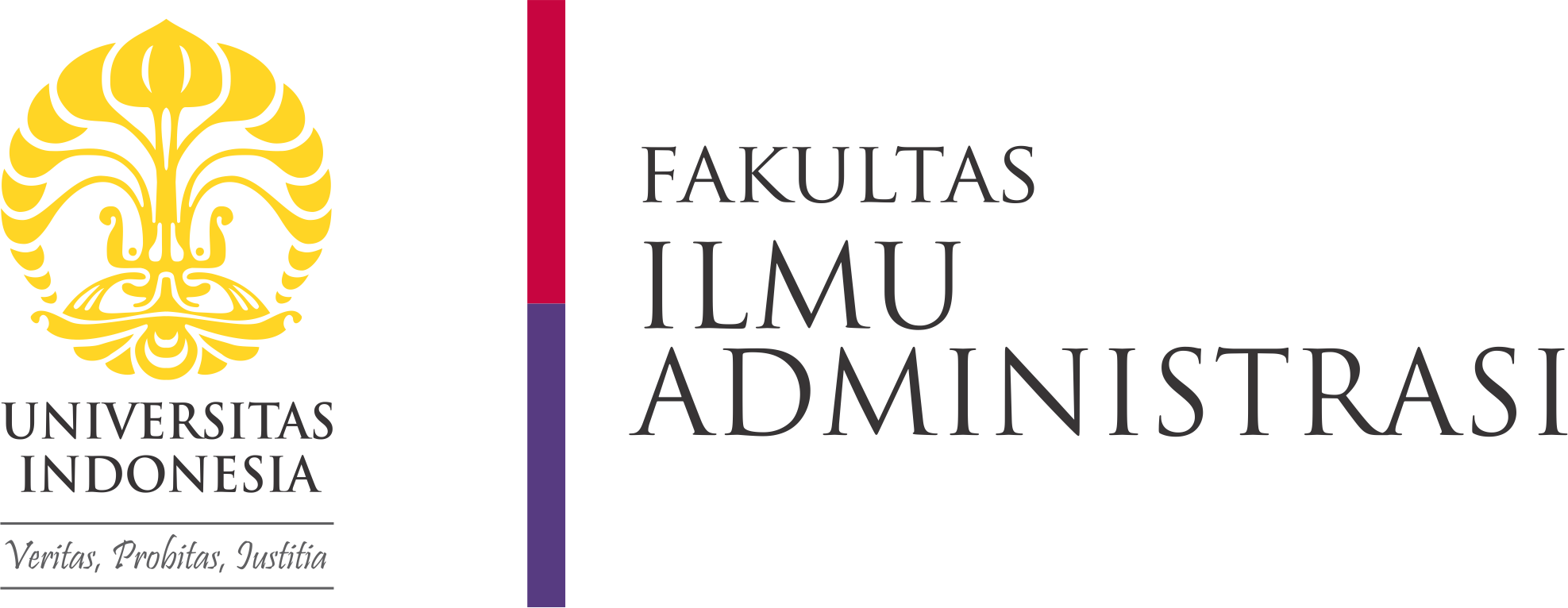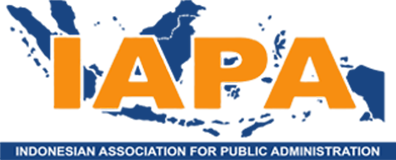Creative Commons License

This work is licensed under a Creative Commons Attribution-Share Alike 4.0 International License.
Abstract
In the twenty-first century, public sector organizations (PSOs) have embraced various innovations to enhance productivity, efficiency, and accountability. Indonesia’s local and central governmental agencies have incorporated public service innovations into their systems, achieving notable improvements. The Ministry of State Apparatus Empowerment and Bureaucratic Reform (Kementerian PANRB) reported 3478 public service innovations through the Public Service Innovation Competition Program (KIPP) by 2022. These innovations have led to significant enhancements in service delivery, increasing productivity by streamlining processes, boosting efficiency by reducing bureaucratic delays, and improving accountability through better transparency and governance. This research employs a post-positivist paradigm with a descriptive methodology, collecting data through interviews and secondary sources. The findings indicate that PSOs can successfully implement innovations within the constraints of Indonesian bureaucracy. These innovations have improved service quality and responsiveness and introduced concepts like public service modification, offering detailed insights into achieving substantial public service changes amidst complex bureaucratic challenges.
References
Arduini, D., Belotti, F., Denni, M., Giungato, G., & Zanfei, A. (2010). Technology Adoption and Innovation in Public Services: The Case of E-Government in Italy. Information Economics and Policy, 23(2), 257–275.
Asmara, A. Y., & Sumarwono, R. (2021). Understanding the Complex Relationship Between Good Governance and Economic Growth in Indonesia During the Reform Era. BISNIS & BIROKRASI: Jurnal Ilmu Administrasi Dan Organisasi, 27(2), 78–88. https://doi.org/10.20476/jbb.v27i2.11219
Batley, R., & Mcloughlin, C. (2015). The Politics of Public Services: A Service Characteristics Approach. World Development, 74, 275–285. https://doi.org/10.1016/j.worlddev.2015.05.018.
Collm, A., & Schedler, K. (2014). Strategies for Introducing Organizational Innovation to Public Service Organizations. Public Management Review, 16(1), 140–161. https://doi.org/10.1080/14719037.2013.822528
Darono, A., & Irawati, D. (2015). Service innovation in the complex environment of tax administration: the Indonesian public sector perspective. International Journal of Innovation and Regional Development, 6(1), 102. https://doi.org/10.1504/ijird.2015.067650
Durant, R. F. (2014). Why Public Service Matters: Public Managers, Public Policy, and Democracy. Palgrave Macmillan. https://doi.org/10.1057/9781137069573
Eisenhardt, K., & Graebner, M. (2007). Theory Building From Cases: Opportunities And Challenges. The Academy of Management Journal, 50, 25–32. https://doi.org/10.5465/AMJ.2007.24160888
Fajri, D. L. (2022). Mengenal Provinsi dan Jumlah Kabupaten di Indonesia. Katadata.Co.Id. https://katadata.co.id/berita/nasional/6206141e9ca33/mengenal-provinsi-dan-jumlah-kabupaten-di-indonesia
Farnham, D., & Horton, S. (1996). Managing People in the Public Services. Macmillan Press Ltd.
Fuglsang, L., & Rønning, R. (2014a). Introduction: Framing innovation in public service sectors: A contextual approach. In L. Fuglsang, R. Rønning, & B. Enquist (Eds.), Framing Innovation in Public Service Sectors (1st Ed., pp. 1–17). Routledge.
Fuglsang, L., & Rønning, R. (2014b). Public Service Sector Innovation in Context. In L. Fuglsang, R. Rønning, & B. Enquist (Eds.), Framing Innovation in Public Service Sectors (1st Ed., pp. 218–233). Routledge.
Gonzalez, R., Llopis, J., & Gasco, J. (2013). Innovation in public services: The case of Spanish local government. Journal of Business Research, 66(10), 2024–2033. https://doi.org/10.1016/j.jbusres.2013.02.028
Harvey, G. (2013). Evidence-based innovation in practice: experiences from health care and implications for the future. In S. P. Osborne & L. Brown (Eds.), Handbook of Innovation in Public Services (pp. 461–476). Edward Elgar. https://doi.org/10.4337/9781849809757
Hodge, G., & McCallum, T. (2017). Public innovation: An Australian regulatory case study. Utilities Policy, 49, 20–29. https://doi.org/10.1016/J.JUP.2017.08.006
Horton, S. (2008). History and Persistence of An Idea and An Ideal. In J. L. Perry & A. Hondeghem (Eds.), Motivation in Public Management: The Call of Public Service (pp. 17–32). Oxford University Press.
Kasim, A., & Fathurahman, H. (2012). Analysis on Mobile Samsat’s Public Service Quality. Bisnis & Birokrasi Journal, 18(1), 22–32. http://journal.ui.ac.id/index.php/jbb/article/viewFile/971/894
Katsigiannis, T., Agarwal, R., & Jin, K. (2015). Business Model Approach to Public Service Innovation. In R. Agarwal, G. Roos, W. Selen, & R. Green (Eds.), The Handbook of Service Innovation (pp. 751–778). Springer. https://doi.org/10.1007/978-1-4471-6590-3_34
Kementerian PANRB. (2021). Peraturan Menteri Pendayagunaan Aparatur Negara dan Reformasi Birokrasi Nomor 7 Tahun 2021 tentang Kompetisi Inovasi Pelayanan Publik Di Lingkungan Kementerian/Lembaga, Pemerintah Daerah, Badan Usaha Milik Negara, dan Badan Usaha Milik Daerah. https://jdih.menpan.go.id/dokumen-hukum/PERATURAN MENTERI/jenis/1195?PERATURAN MENTERI
Kementerian PANRB. (2022). KIPP Tahun 2022 Berakhir, Siapakah Top Inovasi Pelayanan Publik Terpuji Selanjutnya? [KIPP 2022 Ends, Who is the Next Top Public Service Innovation Leader?]. https://www.menpan.go.id/site/berita-terkini/kipp-tahun-2022-berakhir-siapakah-top-inovasi-pelayanan-publik-terpuji-selanjutnya
Lawton, A., Rayner, J., & Lasthuizen, K. (2013). Ethics and Management in the Public Sector. Routledge.
Lukman, I. B. (2021). Rethinking Public Sector Innovation in Indonesia. Proceedings of the 2nd International Conference on Administration Science 2020 (ICAS 2020), 564, 59–67. https://doi.org/10.2991/assehr.k.210629.012
Mahpudin, M. (2022). Inovasi Pelayanan Publik: Pengalaman dari Kota Cilegon, Indonesia [Public Service Innovation: An Explanation from Cilegon City, Indonesia]. Matra Pembaruan, 6(2), 107–117. https://doi.org/10.21787/mp.6.2.2022.107-117
Matei, A., & Camelia, G. (2015). Public Service in Romania and its Role in the Development of the Administrative Capacity. Procedia Economics and Finance, 23, 982 – 985. https://doi.org/10.1016/S2212-5671(15)00440-2
Nalien, E. M., & Ilham, T. (2016). The Effect of Bureaucratic Reforms Implementation for Optimizing of Governance in Indonesia (Focus on the Public Service Innovation in Local Government Institutions). International Journal of Kybernology, 3(2), 43–59. https://doi.org/10.33701/ijok.v3i2.592
Osborne, S. P., & Brown, L. (2013). Handbook of Innovation in Public Services. Edward Elgar Publishing Limited. https://doi.org/10.4337/9781849809757
Pekkarinen, S., Hennala, L., Harmaakorpi, V., & Tura, T. (2011). Clashes as potential for innovation in public service sector reform. International Journal of Public Sector Management, 24(6), 507–532. https://doi.org/10.1108/09513551111163639
Prasojo, E., & Holidin, D. (2012). Rethinking Problematic Governance of Local Government in New Proliferated Regions and Their Impacts. Bisnis & Birokrasi, Jurnal Ilmu Administrasi Dan Organisasi, 19(2), 149–152. https://doi.org/10.20476/jbb.v19i2.1889
Pratama, A. B. (2020). The landscape of public service innovation in Indonesia: A comprehensive analysis of its characteristic and trend. Innovation and Management Review, 17(1), 25–40. https://doi.org/10.1108/INMR-11-2018-0080
Roland, G. (2017). An Elaboration on Measures to Promote Institutional Innovation, Transformation, and inclusiveness to Enhance Public Service Delivery. Review of Public Administration and Management, 05(02), 1–4. https://doi.org/10.4172/2315-7844.1000220
Savitri, R., Cahyarini, B. R., Ahad, M. P. Y., Firmansyah, N., Gusparirin, R., & Samsara, L. (2023). Indonesian Public Service Innovation Trends: An Analysis Based on Public Service Innovation Competition Top Innovations 2014-2019. IAPA 2022 International Conference and International Indonesia Conference on Interdisiplinary Studies (IICIS), KnE Social Sciences, 147–162. https://doi.org/10.18502/kss.v8i5.12995
Schwab, K. (2017). The Global Competitiveness Index Report 2017-2018. In World Economic Forum (WEF). http://ci.nii.ac.jp/naid/110008131965/
Suranto, S., Darumurti, A., & Eldo, D. H. A. P. (2022). Portrait of Public Services Innovation in Indonesia in 2018-2020. Prosiding International Conference on Sustainable Innovation (ICoSI), 2(1), 116–121. https://prosiding.umy.ac.id/icosi/index.php/picosi/article/view/69
Voort, H. van der, Koppenjan, J., Heuvelhof, E. Ten, Leijten, M., & Veeneman, W. (2011). Competing Values in the Management of Innovative Projects: The Case of the RandstadRail Project. In V. Bekkers, J. Edelenbos, & B. Steijn (Eds.), Innovation in the Public Sector Linking Capacity and Leadership (pp. 134–154). Palgrave Macmillan.
Yin, R. K. (2018). Case Study Research and Applications: Design and Methods (6th ed.). SAGE Publications, Inc. https://us.sagepub.com/en-us/nam/case-study-research-and-applications/book250150
Authorship-statement_JBB_24062024
First Page
74
Last Page
85
Recommended Citation
Asmara, Anugerah Yuka; Handoyo, Setiowiji; Purwadi, Purwadi; Dinaseviani, Anggini; Jayanthi, Ria; and Kusumawardhani, Dhian
(2024)
"Examining Public Service Innovations in Indonesia: Challenges, Characteristics, and Implementation within Bureaucratic Systems,"
BISNIS & BIROKRASI: Jurnal Ilmu Administrasi dan Organisasi: Vol. 31:
No.
2, Article 2.
DOI: 10.20476/jbb.v31i2.1414
Available at:
https://scholarhub.ui.ac.id/jbb/vol31/iss2/2






